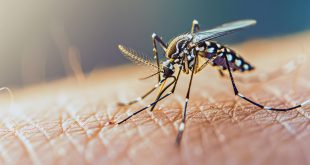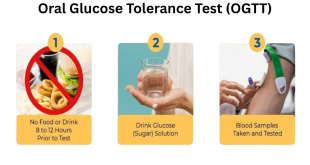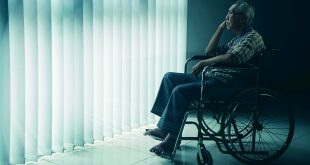 Although gall bladder stones is one of the most commonly diagnosed surgical problems in Nepal, two-third of stones are asymptomatic, and most of them go undetected. About 14 -16% of the population of the United States have gallstones, but the exact incidence in Nepal is not known. Diet has a major role in gall stone formation. Contrary to popular belief, it’s not the fat, but carbohydrates, that plays villain.
Although gall bladder stones is one of the most commonly diagnosed surgical problems in Nepal, two-third of stones are asymptomatic, and most of them go undetected. About 14 -16% of the population of the United States have gallstones, but the exact incidence in Nepal is not known. Diet has a major role in gall stone formation. Contrary to popular belief, it’s not the fat, but carbohydrates, that plays villain.
The pain of biliary colic is constant and infrequent, comes in episodes lasting one to five hours, and is located in the epigastrium, or right upper quadrant, of the abdomen. Like ghosts, they tend to haunt especially at night. Nausea, vomiting, flatulence, bloating, indigestion, and vague pain in the right upper quadrant are some common, but not compulsory, symptoms. The classic picture of biliary colic may be inaccurate, and the connection between gall stones and flatulence dyspepsia is uncertain. Symptoms and complications necessitate cholecystectomy, while death from complications of both conservative and surgical approaches is possible. Biliary sludge may act as the nidus for gallstones formation. Removal of the gall bladder will only relieve the symptoms caused by notorious stones, so decision making is challenging.
Now, let’s clear up some more misconceptions!
Myth Buster #1: Dietary fat is the culprit in gall bladder disease
Studies don’t support the notion that a high-fat diet causes gallstone. They are recognized to be associated with excess dietary carbohydrates. Diet rich in carbohydrates causes the liver to produce a type of bad cholesterol that exacerbates stone formation. Fatty liver, metabolic syndrome/insulin resistance, obesity, and gall bladder problems are closely related. Eating habits that promote overweight, insulin resistance, and type 2 diabetes increase the risk of gallbladder disease. Having gallstones predict a higher risk of dying earlier, not due to the danger gallstones pose, but because of the accompanying cardio-metabolic risks. Remember the dangerous 4Fs: fat, female, forty, and fertile.
Myth Buster #2: Gallstones are hereditary
Only about 30% of the risk for gallstones is inherited. Gall bladder problems are mostly a lifestyle disease, avoidable via lifestyle modification.
Myth Buster #3: Cholecystectomy must be done after an attack or presence of gall stone
Elective cholecystectomy is suggested when symptoms have subsided to prevent further episodes. Stones more than two centimeters, diabetic patients, multiple polyps, increasing size, calcification (porcelain gallbladder), pancreatitis, infection, or sickle cell disease calls for surgery. Due to the advancement of surgery, it’s the call of the surgeon whether to operate or opt for conservative management. Further attacks are a clear indication of gall bladder removal.
Around 50% of times, patients present with “post-cholecystectomy syndrome”. Symptoms present even after surgery, because the root cause is not identified. Sometimes, the patient presents as choledocholithiasis. If symptoms like pain, bloating, and indigestion persist, then other problems like small bowel obstruction, hydrochloric acid or pancreatic enzyme deficiency may be the cause.
Myth Buster #4: Elderly patients are at high risk of surgery complications
Presence of infection, anemia, and malnutrition results in delayed surgery. The latest statistics show death from elective gall bladder surgery as low as 0.15 percent. Age used to be a contraindication, but the improvement in surgical techniques, as well as superior anesthesia, now enable patients in their 80s and 90s to be eligible for surgery.
Myth Buster #5: After cholecystectomy, a low-fat diet is required
There are no works of literature to prove this hypothesis. A paper dating back to 1964 states that removal of the gall bladder does not influence the absorption of butter and olive oil, and that the evacuation of the gall bladder is not essential for the absorption of these types of fat in humans. This is because the gall bladder does not produce bile, it acts as a bile storehouse. So, after cholecystectomy, instead of releasing stored bile to meet the occasional demands of a meal, bile is released continuously. Enough bile is usually secreted to digest fatty meals.
Myth Buster #6: People without gall bladder suffer from fat-soluble vitamin and fatty acid deficiency
Well, no proof of this either, and no papers are proving it. Patients gain weight after surgery, because the gall bladder colic no longer bothers them and overindulgence with carbohydrates becomes the problem.
Myth Buster #7: “Gall bladder flushes” are effective at removing gallstones
Controversy surrounds this question. Many books, articles, and magazines focus on the benefit of gall bladder flush, which is said to expel stones. Patients are encouraged to consume an apple, lemon, herbal tea, or olive oils to aid flushing.
A 2005 analysis in Lancet shows that the composition of these so-called “stones” does not resemble true gallstones (bile salts, cholesterol, and phospholipids), and consists only of greenish, congealed olive oil. Potassium in the lemon juice creates a kind of soap, making the globules appear to stick together with a semi-solid consistency. While not effective in passing gallstones, there’s the potential risk that a high-fat flush of olive oil will trigger gall bladder contraction, precipitating a painful gall bladder attack.
Medical therapy was undertaken with ursodeoxycholic acid, but it was found to only be successful for radiolucent gallstones—a less common kind, consisting only of cholesterol. These are useful in removing gall bladder sludge to some extent.
 Medicosnext
Medicosnext


